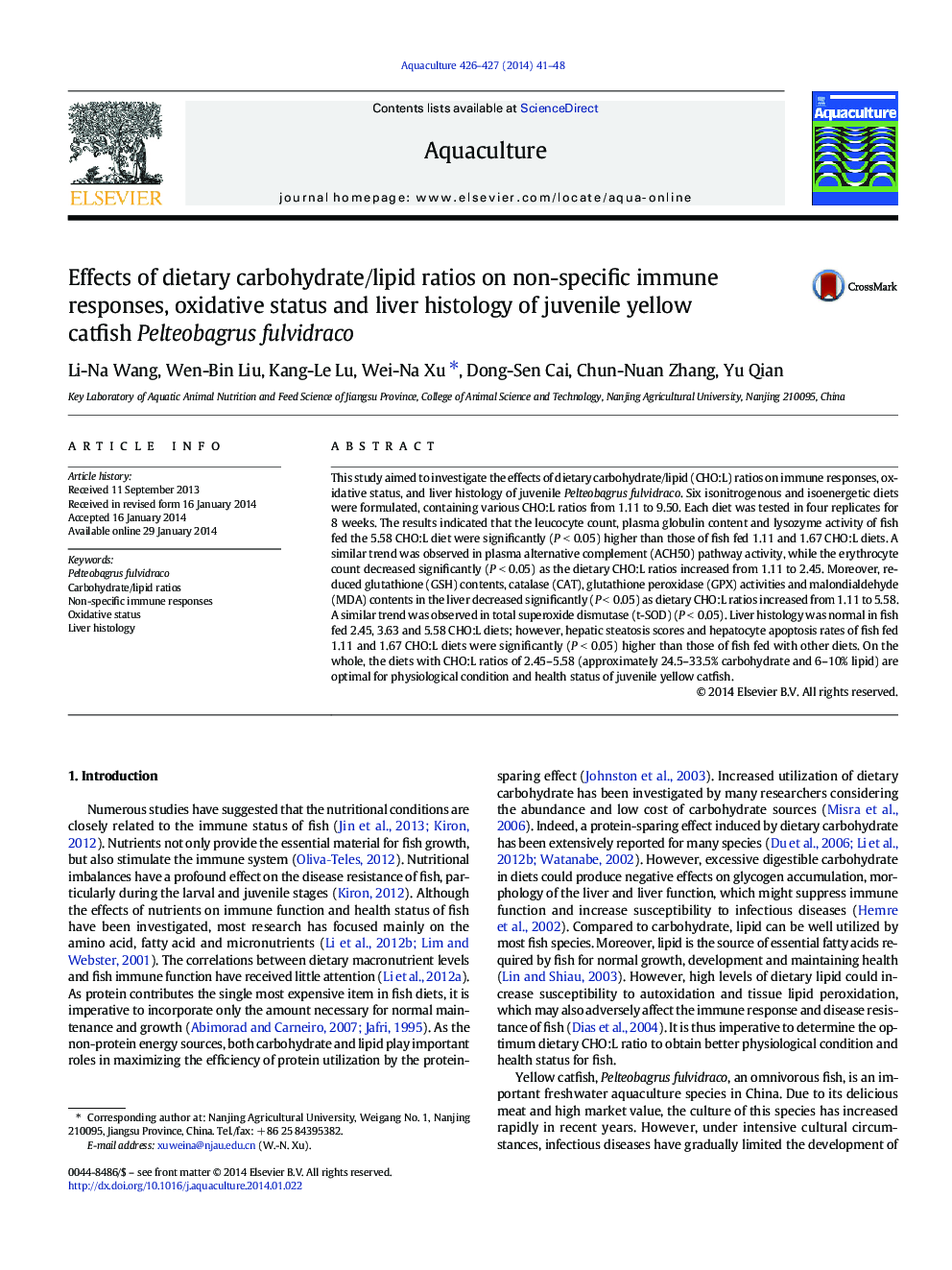| Article ID | Journal | Published Year | Pages | File Type |
|---|---|---|---|---|
| 8495143 | Aquaculture | 2014 | 8 Pages |
Abstract
This study aimed to investigate the effects of dietary carbohydrate/lipid (CHO:L) ratios on immune responses, oxidative status, and liver histology of juvenile Pelteobagrus fulvidraco. Six isonitrogenous and isoenergetic diets were formulated, containing various CHO:L ratios from 1.11 to 9.50. Each diet was tested in four replicates for 8Â weeks. The results indicated that the leucocyte count, plasma globulin content and lysozyme activity of fish fed the 5.58 CHO:L diet were significantly (PÂ <Â 0.05) higher than those of fish fed 1.11 and 1.67 CHO:L diets. A similar trend was observed in plasma alternative complement (ACH50) pathway activity, while the erythrocyte count decreased significantly (PÂ <Â 0.05) as the dietary CHO:L ratios increased from 1.11 to 2.45. Moreover, reduced glutathione (GSH) contents, catalase (CAT), glutathione peroxidase (GPX) activities and malondialdehyde (MDA) contents in the liver decreased significantly (PÂ <Â 0.05) as dietary CHO:L ratios increased from 1.11 to 5.58. A similar trend was observed in total superoxide dismutase (t-SOD) (PÂ <Â 0.05). Liver histology was normal in fish fed 2.45, 3.63 and 5.58 CHO:L diets; however, hepatic steatosis scores and hepatocyte apoptosis rates of fish fed 1.11 and 1.67 CHO:L diets were significantly (PÂ <Â 0.05) higher than those of fish fed with other diets. On the whole, the diets with CHO:L ratios of 2.45-5.58 (approximately 24.5-33.5% carbohydrate and 6-10% lipid) are optimal for physiological condition and health status of juvenile yellow catfish.
Related Topics
Life Sciences
Agricultural and Biological Sciences
Aquatic Science
Authors
Li-Na Wang, Wen-Bin Liu, Kang-Le Lu, Wei-Na Xu, Dong-Sen Cai, Chun-Nuan Zhang, Yu Qian,
